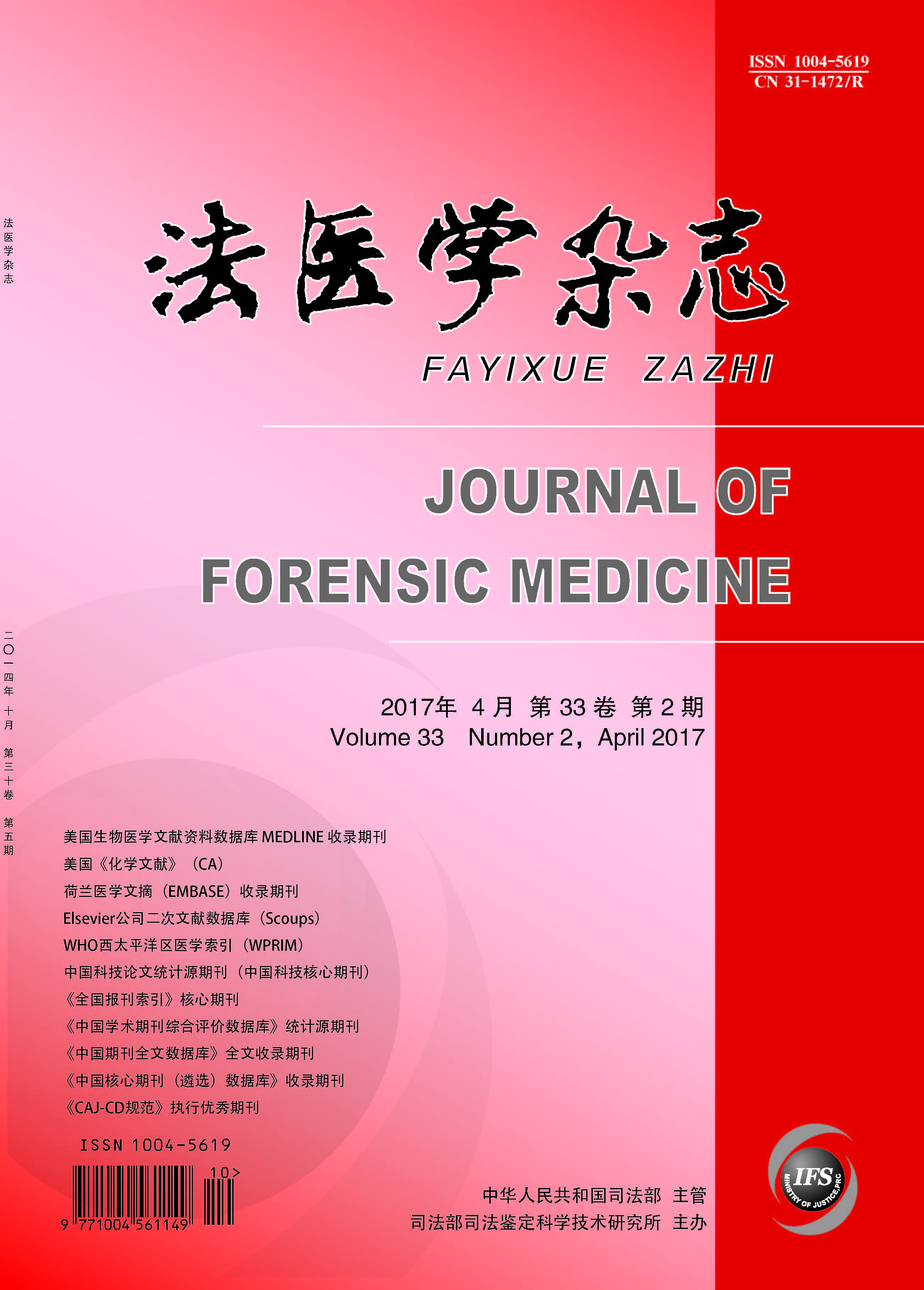|
|
Relationship between the Change Rules of Volatile Organic Compounds in Rat Muscle and Postmortem Interval
LIU BEI-BEI, XIA ZHI-YUAN, MA JIN-QI, ET AL.
2017, 33(2):
120-124.
DOI: 10.3969/j.issn.1004-5619.2017.02.003
Objective To explore the relationship between the change rules of volatile organic compounds (VOCs) in rat muscle and postmortem interval (PMI). Methods A total of 120 healthy rats were divided randomly into 12 groups (10 for each group). After the rats were sacrificed by cervical dislocation, the bodies were kept at (25±1) ℃. Rat muscle samples were separately obtained at 12 PMI points, including 0, 0.5, 1, 2, 3, 4, 5, 6, 7, 8, 9 and 10 d. The VOCs in rat muscles were collected, detected and analyzed by headspace solid-phase microextraction (HS-SPME) coupled to gas chromatography-mass spectrometer (GC-MS). Results In total, 15 species of VOCs were identified, including 9 aromatic compounds, 3 sulfur compounds, 2 aliphatic acids and 1 heterocyclic compound. The species of VOCs increased with PMI: no species were detected within 1 day, 3 species were detected on day 2, 9 on day 3, 11 on day 4, 14 from day 5 to 7, and 15 from day 8 to 10. Total peak area of 15 species of VOCs was significantly correlated to PMI (adjusted R2=0.15-0.96): the regression function was y=-17.05 x2+ 164.36 x-246.36 (adjusted R2=0.96) from day 2 to 5, and y=2.24 x+101.13 (adjusted R2=0.97) from day 6 to 10. Conclusion The change rules of VOCs in rat muscle are helpful for PMI estimation.
Related Articles |
Metrics
|


